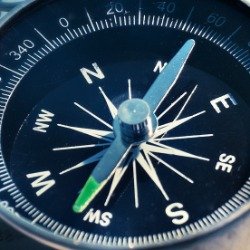Once the firm’s internal strengths and weaknesses are realized and therefore the external opportunities and threats are identified, next it’s important to turn to an analogous process of evaluating the competition. Competitor evaluation not only gives more insight into the strategies and goals of the competition but it also provides a bird’s-eye view of the trends and future of the industry during which the firm operates.
Step 1. Identify the Competition
To analyze the competitive landscape, it’s necessary to form an inventory of those competitors that compete directly or indirectly with the firm’s product or service by providing the identical product or service to the customer. (The need that’s fulfilled by a product or service isn’t necessarily the apparent. for instance, within the case of a store, the customer need isn’t necessarily a haircut, but rather the necessity to appear good and feel happy and attractive.)
Step 2. Identify the Competitors’ Strategies
Analyzing the competitors’ strategies provides the firm a sign of current trends within the marketplace. This helps the firm determine how to approach the customer.
Step 3. Determine the Competitors’
Objectives and Goals
This step may additionally be mentioned as determining the competition’s “internal balance.” The key to properly assessing the competitor is to know where its value system lies. Because each competitor is different, it will place various levels of importance on technology, quality, cost, market share, and mission. Understanding the competition’s objectives can help the firm identify those things that will differentiate it from the rest of the pack.
Step 4. Identify Competitor SWOT
In this step, it’s not only important to assess the competitors’ strengths and weaknesses, even as the firm performed on itself, but it is also valuable to acknowledge those opportunities and threats that will be present for the competition. Identifying the competition’s strengths and weaknesses allows the firm to spot and assess future moves and initiatives that might affect both the industry and also the firm, while identifying the opportunities and threats will give the firm a thought of the kinds of outside forces that might impact the competitor and so attack the firm.
Step 5. Estimate Competitors’ Reaction Patterns
Some competitors react quickly to events within the marketplace, whereas other competitors take a unique approach and react only to selective events within the marketplace. Others are laid-back and react slowly, while still others don’t show a pattern of reaction in the slightest degree. gazing these behaviors provides the firm a more robust understanding of what may occur in an industry if the firm takes certain actions or implements certain initiatives.
Step 6. Select the Competitors to Attack and Avoid
Some competitors are such large financial powerhouses that it should not be financially feasible to attack. Some merely put up the front or the image that they can not be attacked. it’s during this step that it’s valuable to the firm to understand the competitors that an attack strategy would be profitable and people that avoidance would be the simplest policy. Identifying the weak versus the strong competitors will allow the firm to make efficient decisions.
Step 7. Create a Positioning Map
To create a visible understanding of the complete competitive landscape, it is helpful to form a positioning map to supply a visible representation of the firm’s position compared to the competition as depicted in Figure 8.1.

Competition provides the firm the chance to seem into the future. Once all of the data is gathered, a firm can imagine the competitor’s next move and either do the identical if the market supports it or take a distinct route, cutting the competition off at the pass. For example, the house improvement stores Home Depot and Lowe’s are often within minutes of every other or maybe right across the road. Generally, one store decides to maneuver into a neighborhood before the opposite, and the other watches and sets up shop nearby. Once the competitor has found the location, the firm can take action.
Competition creates a way of urgency and infrequently increases sales for all the competitors who are willing to place up a fight. Once the firm’s competition is understood and understood, the following opportunity for the firm is to “go deeper” by implementing competitive intelligence.


